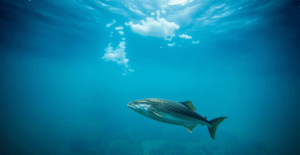Revolutionary Weather Forecasting: 5 Game-Changing Solutions to Safeguard Fisheries from Climate Change
The India Meteorological Department (IMD) has highlighted the critical need for improved weather forecasting to protect the fisheries sector, which plays a vital role in both food security and exports. With global temperatures rising, aquaculture, especially in coastal regions, is facing new challenges that threaten fish health and productivity. IMD Director General Mrutyunjay Mohapatra emphasized that accurate weather predictions are essential to safeguard fisheries, especially as climate change impacts agriculture and threatens staple crops like rice and wheat.
He also noted the rapid warming of India’s landmass, which exacerbates extreme weather events, including cyclones and thunderstorms. Fishermen, highly exposed to these conditions, need better forecasting tools to adapt and protect their livelihoods. As fish rely on cooler waters, rising temperatures disrupt their natural processes, making precise weather data even more crucial. The IMD called for strengthened scientific collaboration to address these growing threats and secure the future of the fisheries industry.

Revolutionary Weather Forecasting: 5 Game-Changing Solutions to Safeguard Fisheries from Climate Change
The India Meteorological Department (IMD) has emphasized the urgent need for enhanced scientific collaboration to advance weather forecasting systems tailored for the fisheries sector. Recognized as a cornerstone of India’s food security and a major contributor to exports, the fisheries industry is facing increasing threats from climate change, necessitating precise and timely weather predictions to safeguard livelihoods and food supplies.
Speaking at the 38th annual event of the ICAR-Central Institute of Freshwater Aquaculture in Bhubaneswar, IMD Director General Mrutyunjay Mohapatra highlighted the growing challenges confronting fisheries due to global warming. As climate change disrupts traditional agriculture—jeopardizing staple crops like rice and wheat—the role of fisheries in securing food supplies becomes more crucial. However, this potential can only be realized if the sector is protected from extreme weather events through reliable forecasting.
Climate Change and Its Impact on Fisheries
Mohapatra pointed out that global temperatures have risen by 1.15°C over the past century, with India’s landmass warming by 0.67°C. Polar regions, however, have experienced even more significant increases, nearing 1.53°C. Unlike polar zones, India’s tropical climate amplifies temperature fluctuations between day and night, creating volatile weather patterns. This unpredictability fuels extreme events such as cyclones, thunderstorms, and sudden squalls, which disrupt marine and freshwater ecosystems essential for fish survival.
Rising Threats to Aquaculture and Fishermen
Aquaculture, particularly in coastal regions, is expanding rapidly as fish farming practices evolve. However, this growth is accompanied by rising risks. Fish, like humans, thrive in stable, cooler environments. Warming waters disrupt their habitats, altering migration patterns, breeding cycles, and overall health. These shifts not only endanger aquatic life but also threaten the livelihoods of millions of fishermen who depend on predictable conditions.
Mohapatra emphasized that fishermen are among the most vulnerable groups exposed to climate volatility. Their daily routines rely on calm seas and stable weather, making them directly susceptible to sudden storms or temperature spikes. For example, inaccurate forecasts can lead to catastrophic losses, such as damaged boats, disrupted catches, or even loss of life.
The Science Behind the Crisis
The IMD chief elaborated on the cascading effects of warming: higher water temperatures reduce oxygen levels, stress fish populations, and trigger disease outbreaks. In freshwater ecosystems, erratic rainfall and droughts further strain aquaculture operations. Coastal regions, meanwhile, face dual threats from sea-level rise and intensified cyclones, which can destroy infrastructure and contaminate breeding grounds.
India’s tropical climate exacerbates these challenges. While polar warming is more uniform, India’s sharp day-night temperature swings create unstable atmospheric conditions. This leads to localized extreme events, such as unseasonal thunderstorms, which are harder to predict with current models.
A Collaborative Path Forward
To address these issues, Mohapatra urged scientists, meteorologists, and fisheries experts to collaborate on developing hyper-localized forecasting tools. Advanced technologies, such as AI-driven models, satellite monitoring, and oceanographic sensors, could provide real-time data on weather patterns, water temperatures, and fish behavior. These systems would empower fishermen with actionable insights—such as alerts on approaching storms or advice on optimal fishing times—to minimize risks.
Moreover, integrating traditional knowledge with modern science could enhance resilience. Coastal communities often rely on generations-old practices to interpret weather signs; pairing this wisdom with technological innovations could create robust early-warning systems.
The Bigger Picture: Food Security and Sustainability
With climate change threatening traditional agriculture, fisheries offer a sustainable alternative to meet nutritional needs. Fish are a rich protein source and contribute significantly to rural economies. However, their sustainability hinges on proactive measures. Improved forecasting would not only protect fishermen but also ensure stable fish supplies, curbing price volatility and shortages.
Mohapatra’s call to action aligns with global efforts to climate-proof food systems. By prioritizing science-based solutions, India can mitigate risks, support vulnerable communities, and secure a critical food source for future generations. The time to act is now—before escalating temperatures push fisheries beyond the brink of adaptability.
In conclusion, as climate change reshapes ecosystems, the synergy between meteorology and aquaculture emerges as a lifeline. Through innovation and collaboration, India can turn challenges into opportunities for resilience and growth.
You must be logged in to post a comment.